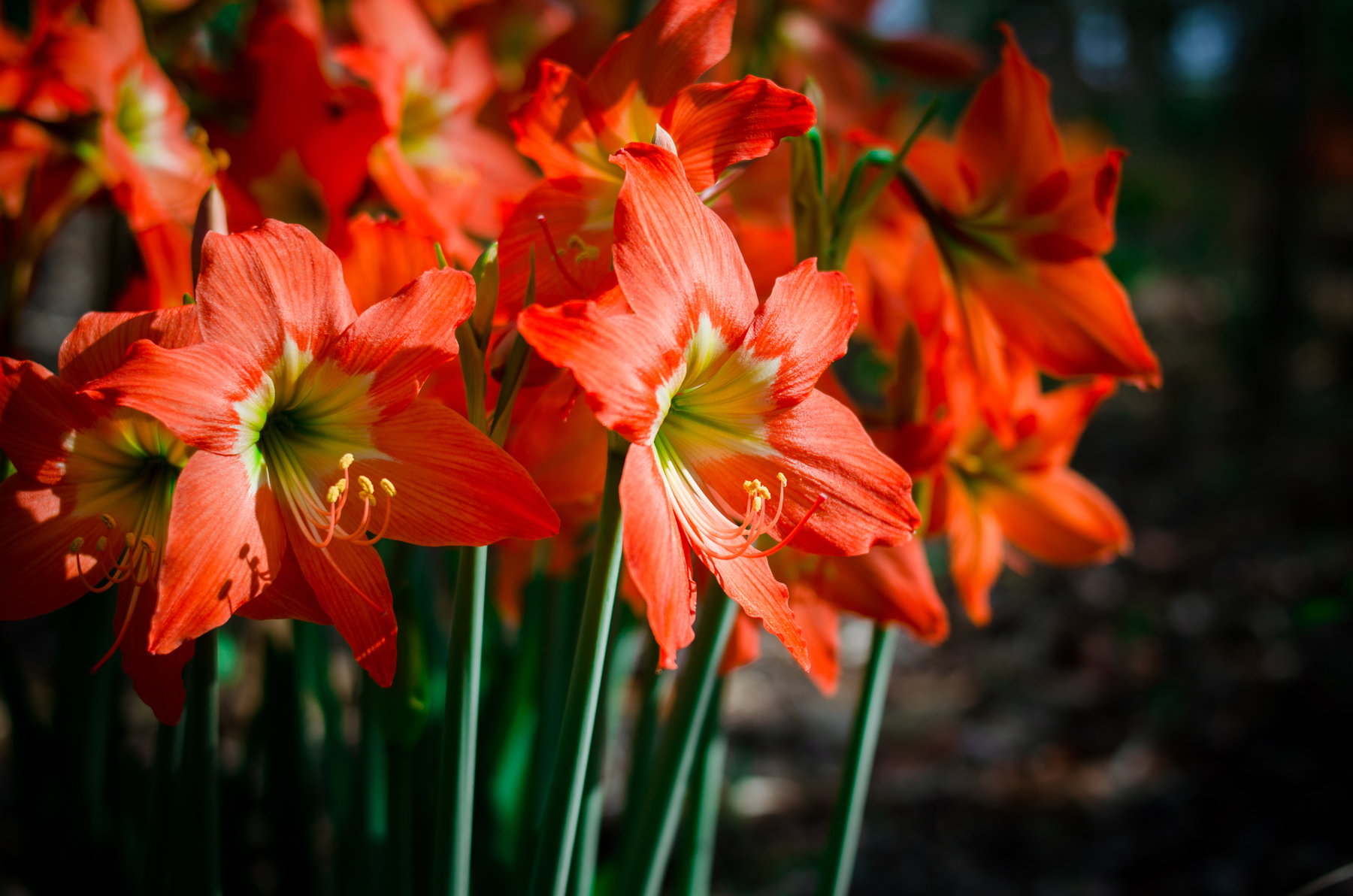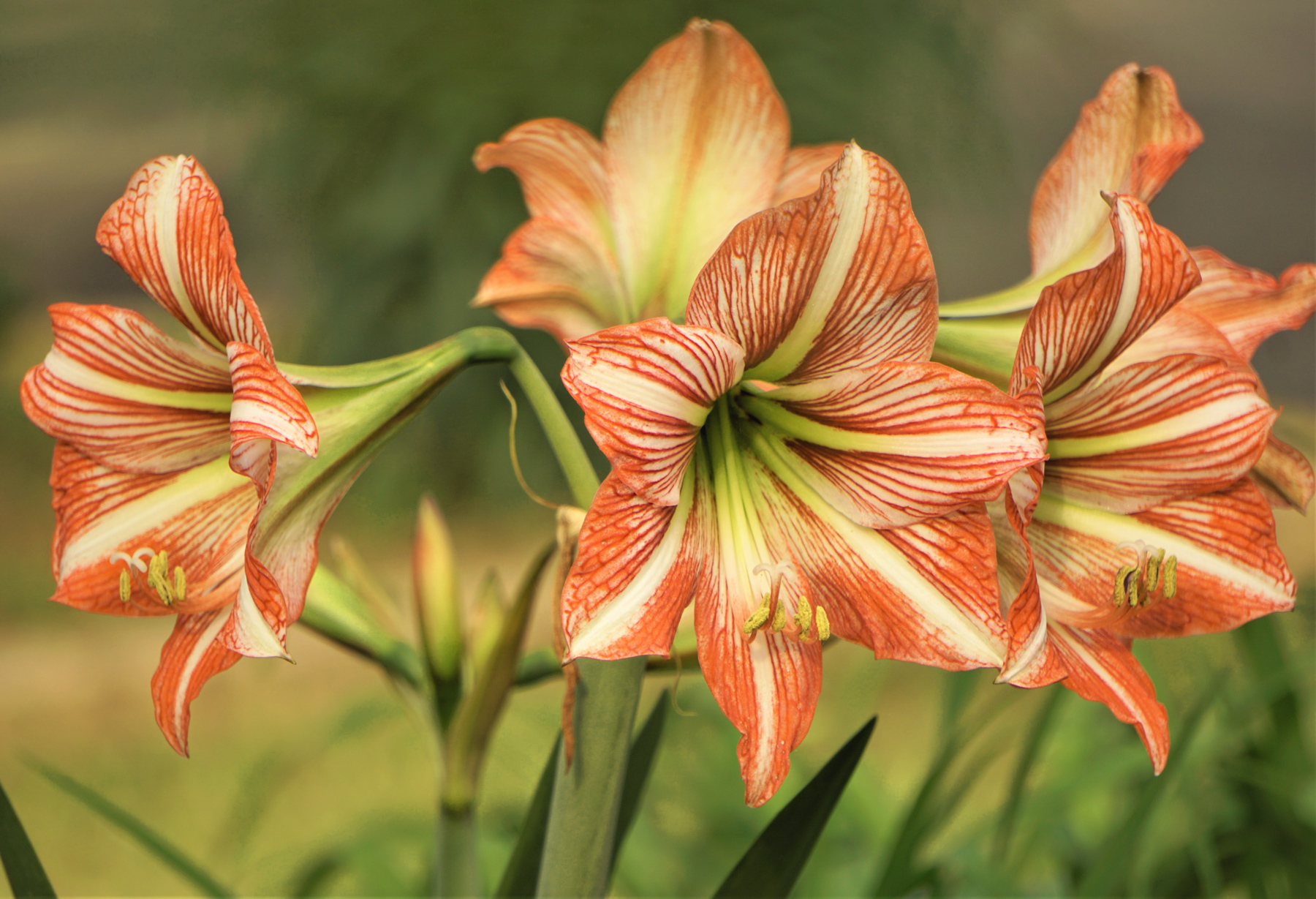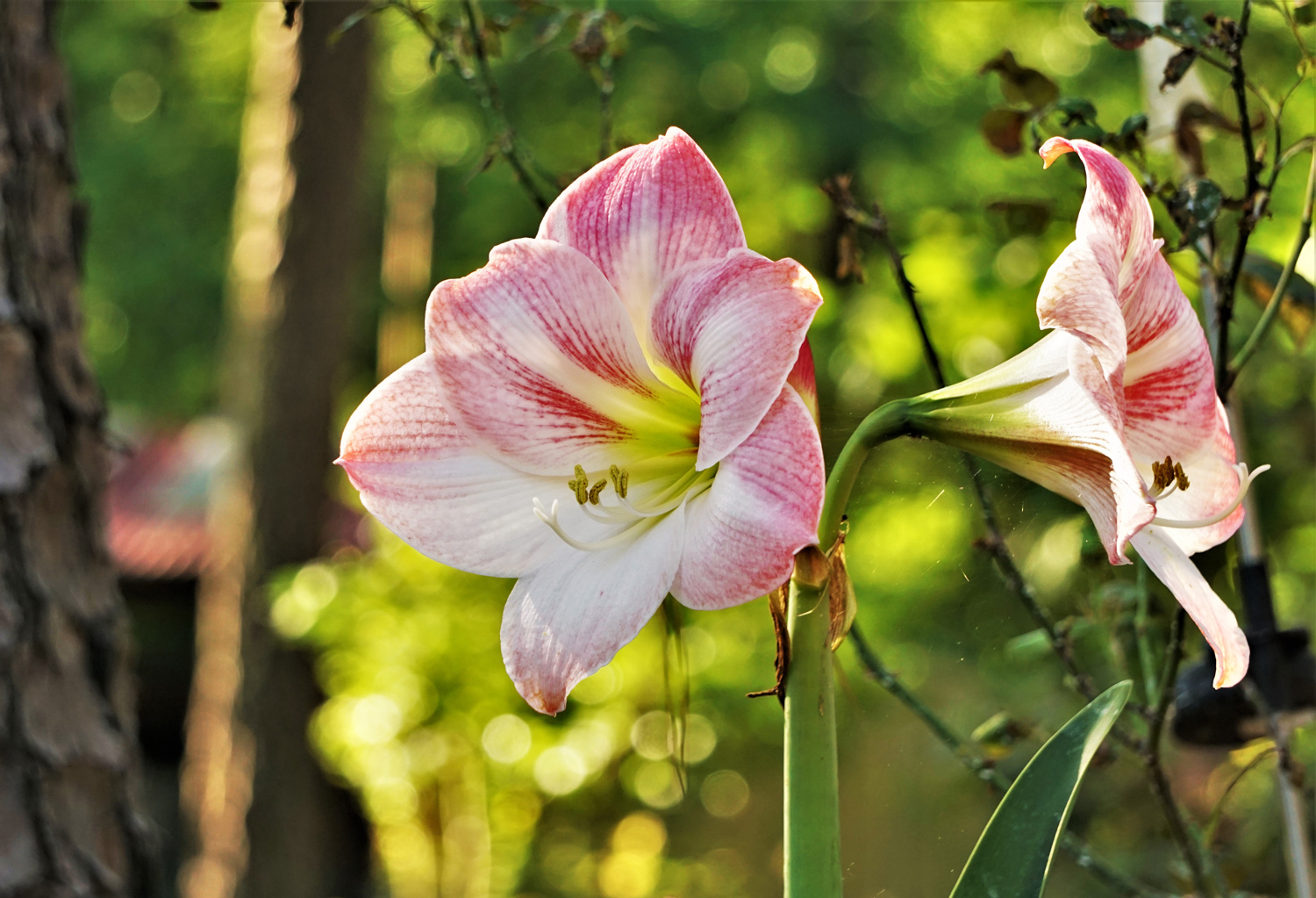Gardening With Amaryllis in Warm Climates
Do you live in an area where winter temperatures never dip below 20°F (hardiness zones 9-11)? If so, you can grow amaryllis outdoors as a perennial plant. These tropical bulbs may be planted in the ground or in pots, and be left outdoors year-round. You can look forward to an impressive display of flowers in your garden each spring. And, if you wish, you may cut the stems and bring the flowers indoors to create a dramatic bouquet that lasts for weeks.
The following instructions apply only to gardeners in growing zones 9-11. If you live in a colder climate, please follow our usual planting and care instructions which you can find HERE.

Get the Basics About Growing Amaryllis Outdoors
The bulbs that we know as amaryllis, are actually members of the genus Hippeastrum. This family of bulbs can be found growing wild in tropical and sub-tropical regions of Brazil as well as in some parts of Peru, Argentina, Mexico and the Caribbean. Plant breeders have been hybridizing amaryllis for more than a century and we can thank them for introducing scores of beautiful cultivars.
Today, amaryllis bulbs are grown commercially in Holland, Israel, South Africa, Peru and several other countries. The bulbs are typically available for purchase in the fall, from September through December. Remember that inside each bulb is a living plant, so it's important to care for the bulbs properly and plant them as soon as possible.

Where to Plant Amaryllis
For the first growing season, consider keeping your amaryllis bulbs in containers so you can enjoy the flowers indoors or on your patio. Then, after the blossoms fade, you can transfer the bulbs into your garden. Newly purchased amaryllis bulbs come into bloom quickly -- usually within 2 to 3 months. Once the bulbs have been growing in your garden for a full year, their normal bloom time will be early spring.
Amaryllis bulbs are typically more robust and produce more flowers when they are grown in full sun. But in hot climates, strong afternoon sunlight and extremely high temperatures can stress the plants and cause leaf scorching. The flowers also last longer if they are shaded during the hottest part of the day.
This is another good reason to plant your newly-purchased amaryllis bulbs in containers. During the first growing season, it will be easy to move the plants around until you find the best combination of sun and shade for your growing conditions.
Amaryllis are native to arid climates and the plants require very little moisture. In fact, the bulbs will rot if they are grown in wet soil. Be sure to plant your amaryllis in a well-drained area where water will not collect. This is especially important during the winter months when the bulbs are dormant. If you don’t have a suitable place to plant the bulbs, grow them in pots. If possible, choose a planting location where the tall stems and big blossoms will be protected from strong wind and heavy downpours.

How to Plant Amaryllis Bulbs Outdoors
When amaryllis are growing in their native habitat, the neck and shoulders of the bulb are usually at or slightly above the soil surface. In areas where there is no danger of frost, plant your amaryllis so the top ¼ of the bulb is exposed. If frost is a possibility, you may protect the bulb by covering it with several inches of soil or mulch.
If you are planting multiple bulbs, space them 12-15” apart so each flower cluster has room to shine. After planting, water well to settle the bulb. Then water sparingly until the plant has sent up a flower spike or is producing leaves. If the area is mulched, pull the mulch away from the top of the bulb so it’s not covered.

Care After Flowering
After the flowers fade, use a sharp knife to cut off the stalks, leaving 1” stubs. Allow the leaves to grow throughout the summer. This is when the bulb will produce the energy it needs to bloom the next spring. To encourage strong growth, apply a balanced, water-soluble fertilizer once a month during late spring and summer. Amaryllis require very little water and overwatering is a sure way to kill the bulb. Natural rainfall is usually adequate, though you may need to water during periods of drought.
In mid to late fall, amaryllis usually enter a 3-4 month dormancy period. During this time, is normal for some or all of the foliage to yellow and die back. The bulb will then rest until it is ready to bloom again.

Divide Only When Necessary
Over time, an amaryllis bulb will usually produce “daughter” bulbs around the sides of the main bulb. Eventually, these young bulbs will get large enough to produce their own flowers and you’ll get a bigger clump of flowers. If you want to move some of these bulbs to a new area or want to share them, you can dig and divide the original bulb.
The best time to divide an amaryllis bulb is in the fall when the plant is dormant. Wait until the foliage dies back and then dig up the entire clump. Gently separate some or all the offsets from the mother bulb. Replant a soon as possible. If necessary, you may store the bulbs in a cool, dry place and replant them in mid to late fall.
Learn more about growing amaryllis here:
